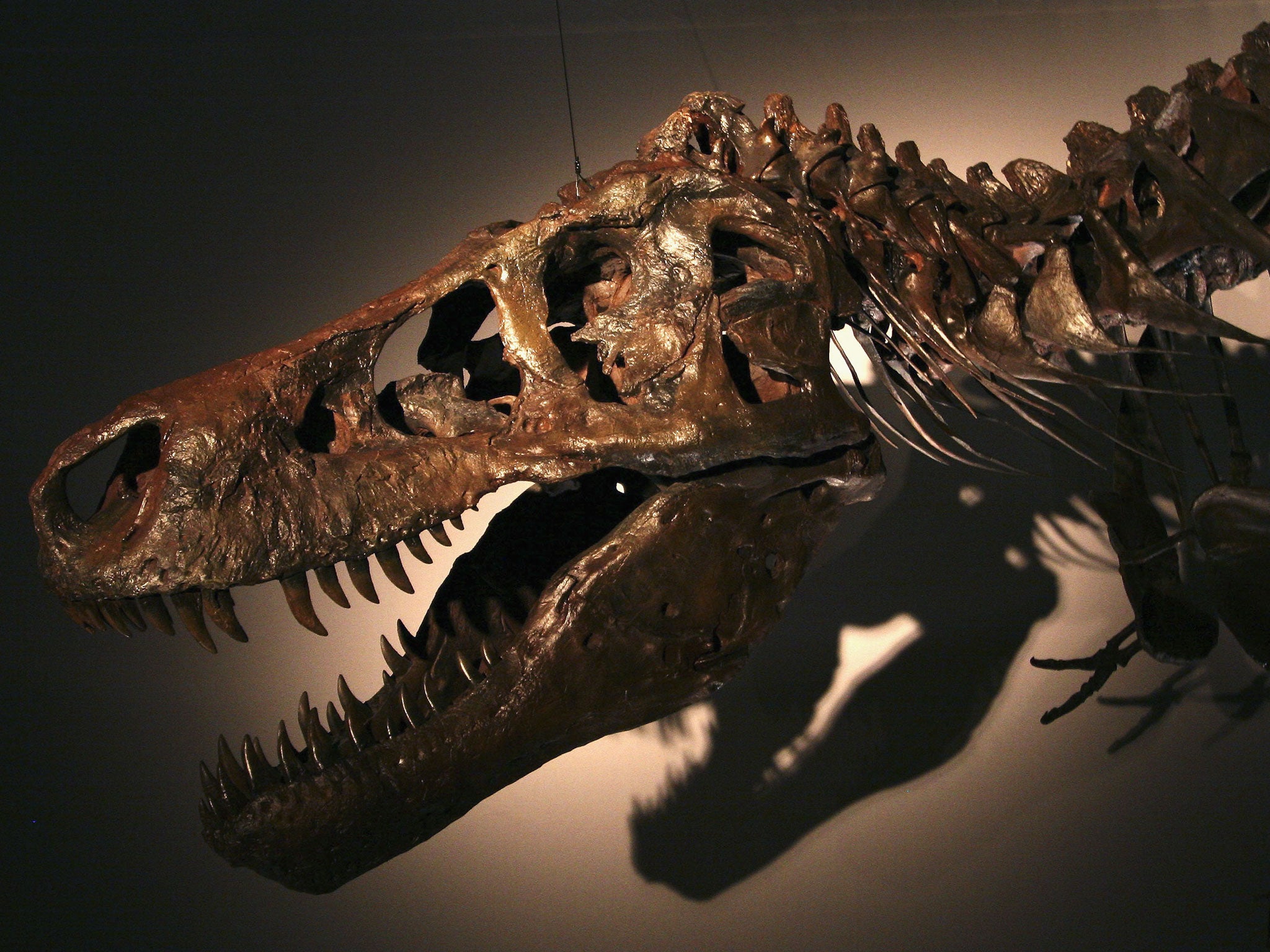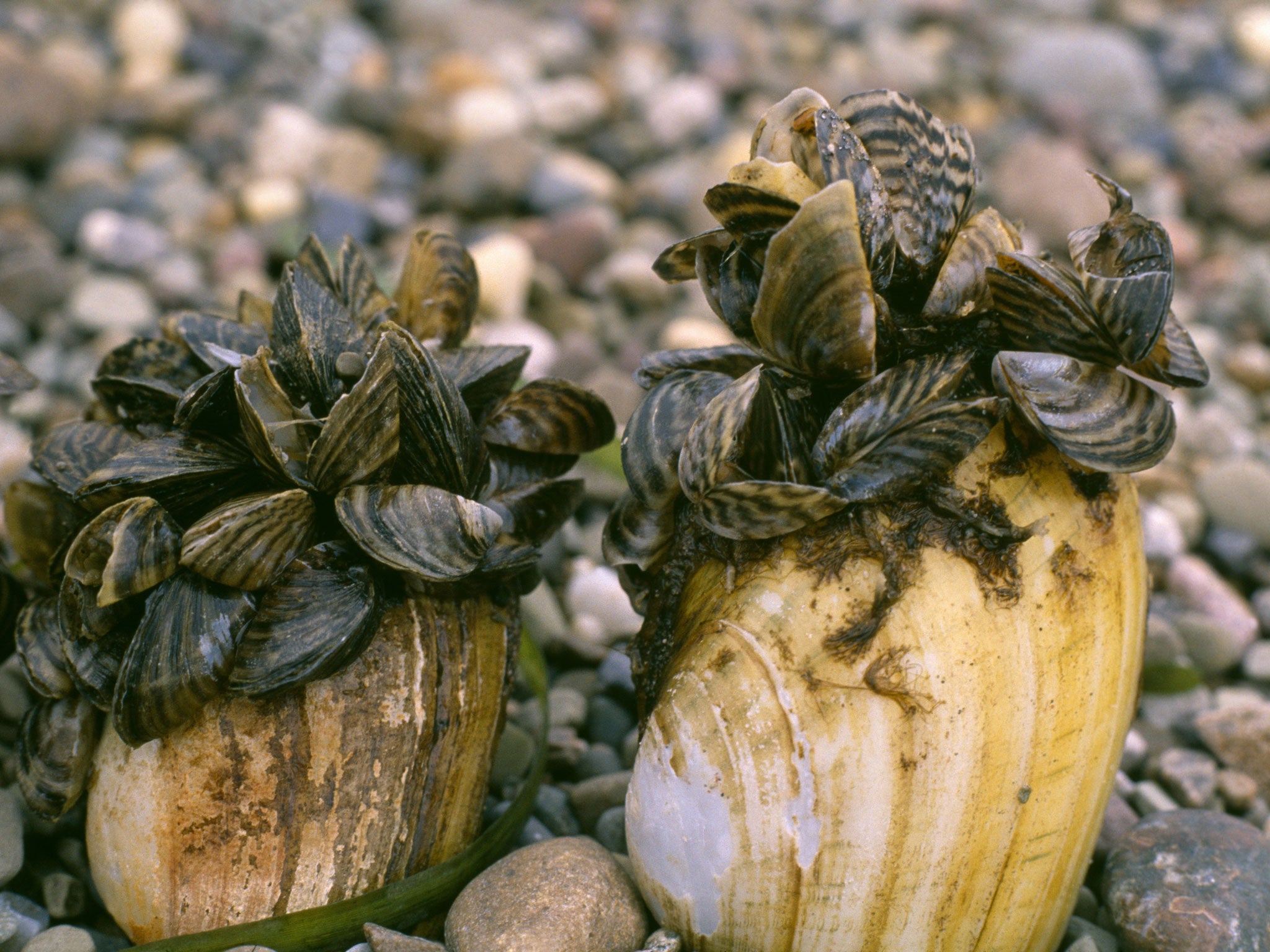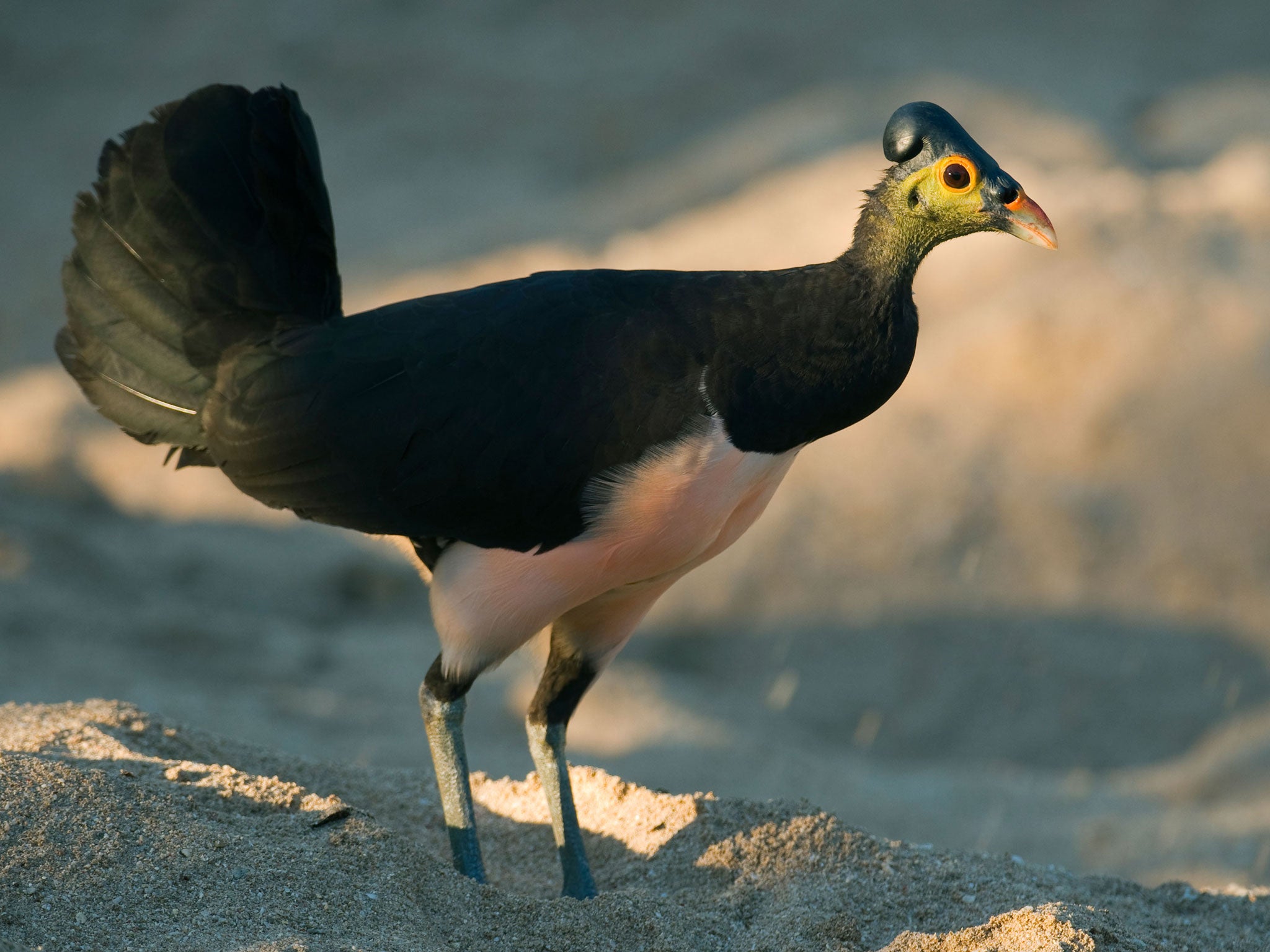The Sixth Extinction: Earth is on the brink of another massive loss of animal species but this time the calamity isn't an asteroid or ice age...
Earth is on the brink of a sixth mass extinction – and this time the calamity isn’t an asteroid or a cold snap

Your support helps us to tell the story
From reproductive rights to climate change to Big Tech, The Independent is on the ground when the story is developing. Whether it's investigating the financials of Elon Musk's pro-Trump PAC or producing our latest documentary, 'The A Word', which shines a light on the American women fighting for reproductive rights, we know how important it is to parse out the facts from the messaging.
At such a critical moment in US history, we need reporters on the ground. Your donation allows us to keep sending journalists to speak to both sides of the story.
The Independent is trusted by Americans across the entire political spectrum. And unlike many other quality news outlets, we choose not to lock Americans out of our reporting and analysis with paywalls. We believe quality journalism should be available to everyone, paid for by those who can afford it.
Your support makes all the difference.There have been five mass extinction events in Earth’s history. In the worst, 250 million years ago, 96 per cent of marine species and 70 per cent of land species died off. It took millions of years to recover.
Nowadays, many scientists are predicting that we’re on pace for a sixth mass extinction. The world’s species are already vanishing at an unnaturally rapid rate. And humans are altering the Earth’s landscape in far-reaching ways: we’ve hunted animals such as the great auk to extinction; we’ve cleared away broad swaths of rainforest; we’ve transported species from their natural habitats to new continents; we’ve pumped billions of tons of carbon dioxide into the atmosphere and oceans, transforming the climate.
Those changes are pushing more species to the brink. A 2007 report from the Intergovernmental Panel on Climate Change suggested that 20 to 30 per cent of plant and animal species faced an increased risk of extinction this century if the planet keeps warming (though scientists are still debating these exact numbers, with some going far higher).
So what happens if the extinction rate speeds up? That’s one of the questions that Elizabeth Kolbert, the New Yorker science writer, explores in her excellent new book, The Sixth Extinction, an in-depth look at the science of extinction and the ways we’re altering life on the planet. We spoke by phone this week about the topic.
Brad Plumer: Let’s start by walking through the history of science. In the 18th century, no one even knew that there were any extinct species. How did we get from there to realising there had been five of these mass extinction events in Earth’s history?
Elizabeth Kolbert: There is an interesting history there. Up until the early 1800s, the concept of extinction didn’t really exist. Even early in the 19th century, you had Thomas Jefferson hoping that when he sent Meriwether Lewis and William Clark to the North-west, they would find mastodons roaming around. Mastodon bones had been unearthed – there was a very famous one unearthed in New York and displayed in Philadelphia – and people thought they must still exist somewhere.
But right around that time, a French naturalist named Georges Cuvier came to the realisation that if these animals were out there, we would have seen them by now. And that made sense of a lot of things. There were these bones that were very, very hard to explain. And more and more, as Europeans colonised the New World, they were getting bones shipped to them. It made sense of these weird nautical creatures that had been found.
So extinction actually predated the concept of evolution by about half a century – people knew that things went extinct, even though they didn’t really understand how species came into being. But there was still some debate. Cuvier thought that when extinctions happened, it must be because the Earth changed quickly and catastrophically. Why else would an animal that was perfectly suited to life on this planet go extinct? His theory became known as “catastrophism”. And Charles Lyell and Charles Darwin came along and said, “That’s ridiculous, the Earth changes slowly, we’ve never seen a catastrophe, that’s because they don’t exist.”
That paradigm persisted until the 1980s and 1990s. That was when Walter Alvarez and his father Luis came up with the theory that an asteroid impact had done in the dinosaurs. And that idea was actually resisted for the same reasons – the dominant view was that the Earth does not change quickly. But then it was proven.
And so now the prevailing view of change on planet Earth, as one palaeontologist put it, is that the history of life consists of long periods of boredom interrupted occasionally by panic. It usually changes slowly, but sometimes it changes fast, and when it does, it’s very hard for organisms to keep up.
BP: Nowadays, scientists are aware of five mass extinction events in the past, starting with the End-Ordovician Extinction 450 million years ago and up to the End-Cretaceous Extinction that killed off the dinosaurs 66 million years ago [see graphic, right]. Is there a lot we still don’t know about what caused these events?
EK: Yes, absolutely, although it depends. I think with the dinosaurs, [the asteroid theory] is quite widely accepted at this point. There was a big paper in Science on this subject last year, although there are still a couple of holdouts.
The worst mass extinction of all time came about 250 million years ago [the Permian-Triassic Extinction event]. There’s a pretty good consensus there that this was caused by a huge volcanic event that went on for a long time and released a lot of carbon dioxide into the atmosphere. That is pretty ominous considering that we are releasing a lot of CO2 into the atmosphere, and people increasingly are drawing parallels between the two events.
The very first extinction event seems to have been caused by some kind of sudden cold snap, but no one’s exactly sure how that happened. But then, with the other two, the causes of those are pretty murky and people have tried to come up with a unified theory for these extinctions, but that hasn’t worked at all. The causes seem to be pretty disparate.

BP: At some point, scientists realised that modern-day extinction rates seem to be elevated – that species are now going extinct faster than the normal “background” rate. How did they realise this?
EK: I think a point that’s important to make is that, normally, you shouldn’t be able to see anything go extinct in the course of a human lifetime. The normal background rate of extinction is very slow, and speciation and extinction should more or less equal out. But that’s clearly not what is happening right now. Any naturalist out in the field has watched something go extinct or come perilously close. Even children can name things that have gone extinct.
So as soon as this concept of background vs mass extinction came into being in the 1980s, people realised that what we’re seeing today is not just background extinction. Now, whether you make the jump to say that a major mass extinction is going on or just an elevated extinction rate, that’s up for debate. But if you are looking at this in a rigorous way, you can see that something unusual is going on.
BP: One thing your book explores is that there’s no one factor causing modern-day extinctions. There’s hunting. There’s deforestation. There are changes in land use. There’s climate change and the acidification of the oceans. Which of these stands out as most significant?
EK: I think many scientists would say that what we’re doing to the chemistry of the oceans could end up being the most significant. One-third of the carbon dioxide that we pump into the air ends up in the oceans almost right away, and when CO2 dissolves in water, it forms an acid – that’s just an unfortunate fact.
The chemistry of the oceans tends to be very stable, and to overwhelm those forces is really hard. But we are managing to do it. When people try to reconstruct the history of the ocean, the best estimate is that what we’re doing to the oceans, or have the potential to do, is a magnitude of change that hasn’t been seen in 300 million years. And changes of ocean chemistry are associated with some of the worst extinction crises in history.
BP: Are there lessons we can learn from past extinctions that provide clues for what the current changes hold?
EK: People are trying to tease out what survived previous extinctions and ask what are the characteristics of those that survived. It’s called the selectivity of extinction events. Why did some groups survive and others didn’t? It turns out to be, 65 million years after the fact, a very, very difficult question. But speaking broadly, the species that tend to survive mass extinction events tend to be widely distributed, or groups that have a lot of species. I’m not sure whom that’s going to help today, but that seems to be the pattern.
BP: You discuss global warming in your book. And the big concern here seems to be that a lot of species are adapted to particular climate ranges and, if those heat up, some species may not be able to move or relocate fast enough to more suitable climates. How much do we really know about these dynamics?
EK: What people are finding, what the scientists that I was out in the Peruvian cloud forest with are finding, is that things move at very different rates. People have calculated how fast species would have to move to keep up with rising temperatures, whether it’s moving up a mountain or moving to higher latitudes.
And some organisms can keep up with that fantastically high pace – for example, in Peru, there was this one genus of tree called Schefflera, which is sometimes used as a house plant, and that genus is moving really fast up the mountain. But some of the other plants weren’t moving at all, and others were moving but not nearly fast enough. So the lesson is that all those complicated relationships, which in the tropics have been pretty stable for a long time, are going to break up. And we just don’t know what the fallout from that is going to be.
BP: So you end up with pretty wide estimates for how many species could go extinct if the planet heats up this much. Some studies suggest that 20 to 30 per cent of species are at risk of extinction if the planet warms 2°C. Other scientists think those estimates are flawed.
EK: There’s still a lot we don’t know. You often hear that what we’re doing is a planetary experiment – but we only have one planet, and we can only run this experiment once. So some modelling efforts get pretty complicated. Just because a species lives in a certain climate under certain conditions, could it live under different conditions? Or is this just where it’s maximally competitive? What happens if some of your competitors are disadvantaged? We just don’t know. Life turns out to be incredibly complicated.
BP: Most of the people in your book who study these trends tend to think that they’re horrible news. Did you come across any researchers who had a more optimistic view?
EK: Even in moments of extremes, certain organisms do thrive. They’re sometimes called “disaster taxa”. After the End Permian extinction, which was the worst mass extinction of all time, Lystrosaurus, a pig-sized animal, did phenomenally well. It was the biggest animal on the planet; you find fossils everywhere. And the question of why did it do so well? We just don’t know. But some things will thrive. Some things will thrive in an acidified ocean because all of their competitors will drop out. So undoubtedly there will be surprises. But I have not met anyone who hasn’t said we’re going to be vastly simplifying the web of life.
BP: The spread of people across continents has transported all sorts of species to new habitats – and sometimes that’s had catastrophic results, like when the brown tree snake was introduced into Guam and wiped out the native birds. Is this sort of exchange speeding up, or are there efforts to slow it down?
EK: There are certain moments of time where you see a huge exchange of species. After Columbus arrived in the New World, there was this huge exchange. And as global travel becomes very rapid, that speeds up exchanges. Organisms that couldn’t survive on the Mayflower could survive in a modern supertanker or plane and get transported from one continent to another. So we’ve ratcheted things up a notch.
We don’t do as much purposeful moving of species as we used to – where we’ve decided we’d like to have this bird in a new place. We’ve done a lot to prevent that. You’re not supposed to just take a bird from South America and release it in Australia. But the unconscious transport of species, I think there’s no doubt that is increasing dramatically as the sheer amount of cargo increases. And it can still have devastating effects. Look at the Asian carp, working their way toward the Great Lakes. There’s the Asian longhorn beetle, a recent invader causing tremendous damage to forests in America. There’s the emerald ash borer, quite a recent one, which has led to signs in the North-east [of the US] telling people not to move firewood, to avoid moving these invaders around. There are zebra mussels, which recently moved into Massachusetts, taking over lakes there. The disease that’s killing off bats in the North-east and in the DC area, that’s an invasive pathogen that was brought in, it’s a fungus. We can name one thing after another. And I’m sure if we have this conversation a year from now, there will be new ones that we know about.

BP: What about attempts to save species from extinction? What are some of the more interesting efforts you encountered?
EK: A lot of them involve zoos or conservation organisations. There are these really fascinating and pretty ugly animals called hellbenders – big salamanders that could feature in a horror movie. They are very endangered, and what people are trying to do is raise them to a certain size at the Bronx Zoo, and then repopulate streams in upstate New York. Also at the Bronx Zoo there’s an amazing project with this endangered bird [the maleo] from an island in the Pacific. It lays enormous eggs that have to be incubated in volcanic soil. They bury the egg and the egg is warmed by volcanic activity in the area, which is just amazing. So the zoo is trying to make an incubator that mimics these volcanic soils. Then they trick the birds, by taking away their eggs so that they lay another. And there are hundreds and hundreds of these efforts.
BP: Don’t these sorts of efforts tend to favour “charismatic” animals over things like tiny organisms in the ocean that could affect entire food webs?
EK: Yes. We only see what we see. And we don’t know where the link is that may turn out to be crucial, because we’re not participating in the food web at that level of specificity. The scary thing is when scientists find organisms at the bottom of the food chain that can’t survive under conditions that we predict will occur in the next century or so. That has happened. Then you can potentially get big knock-on effects on the food chain. If you talk to marine scientists, that’s what they’re worried about. You might be able to raise that pteropod in a tank, but it really doesn’t matter. Because we’re talking about things that exist on a massive scale. Too numerous to count. That’s what keeps the food chain going.
BP: What’s the big thing you took away after writing this book?
EK: It’s one very sobering thought: many of our best qualities as humans – our creativity, our cleverness, our cooperation, the fact that we can work in these huge societies, and pass knowledge on from generation to generation – those things can turn out to be damaging. It’s not just that we go out and poach things, although that’s a problem. We’re smart and inventive and we can change the planet by doing things that have no evil intent. For example, going on vacation and bringing a bat fungus from Europe completely unintentionally. So it’s not always clear how you would separate out what we do just by being human from what we do that has all of these unfortunate side effects. µ
© The Washington Post
Join our commenting forum
Join thought-provoking conversations, follow other Independent readers and see their replies
Comments